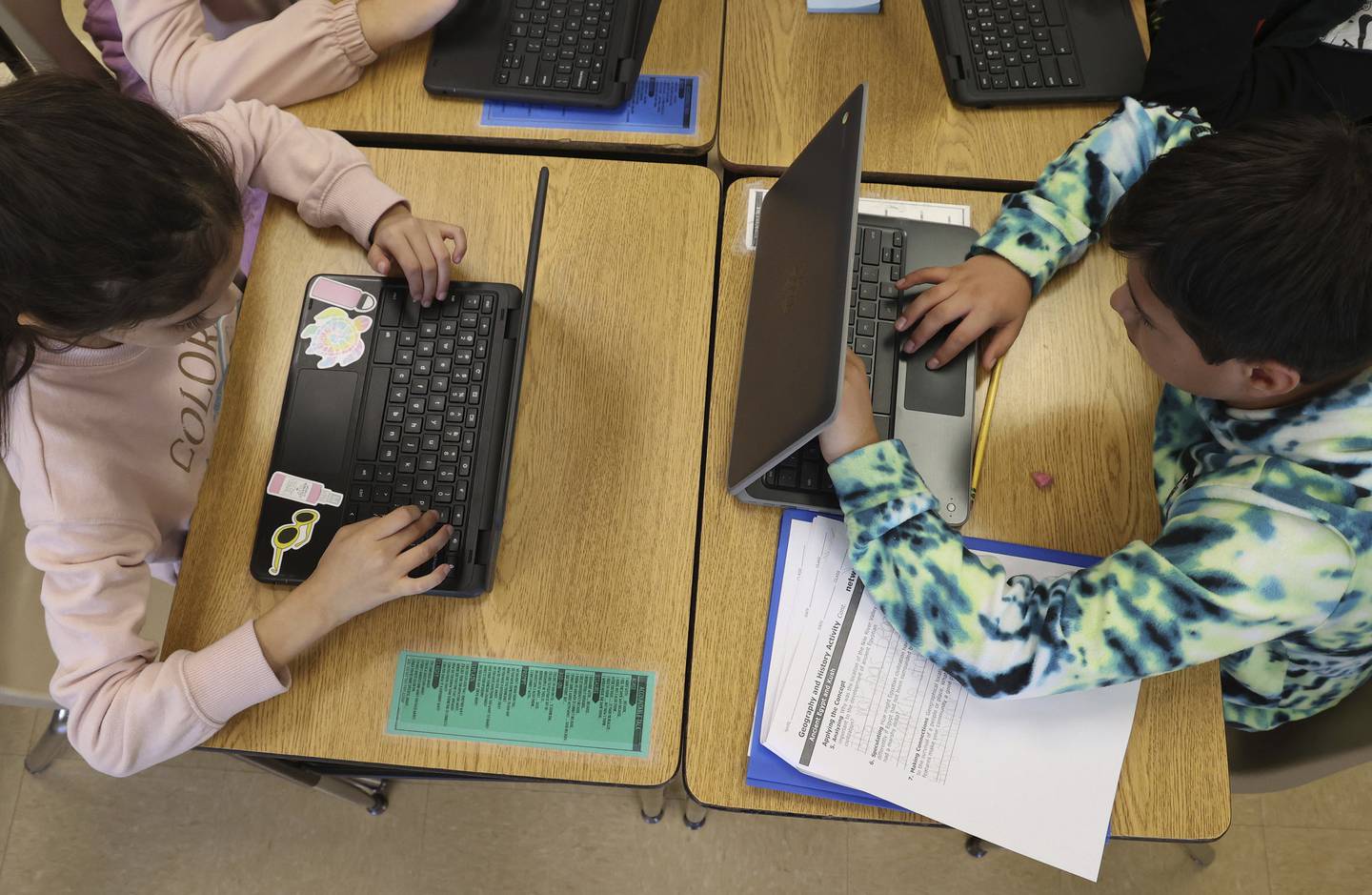A state program intended to deliver equitable funding for Illinois school districts in low-income communities was lambasted by critics who are asking lawmakers in Springfield for more than $1 billion a year to meet the new law’s 2027 deadline to fully fund public education
According to a recent report from the Partnership for Equity and Education Rights Illinois and the Education Law Center, despite five years of using the state’s new Evidence-Based Funding formula, 1.7 million students from 83% of Illinois school districts still attend underfunded schools.
Advertisement
The new statewide education justice coalition, PEER IL, was created “to ensure the state is fulfilling its promise to provide Illinois public school students fully funded and fully resourced public schools,” PEER IL officials said.
When then-Gov. Bruce Rauner signed Evidence-Based Funding into law in 2017, the legislation aimed to “comprehensively overhaul the state’s school financing system,” PEER IL officials said.
Advertisement
According to the report, reaching the adequacy benchmarks put forth in the law requires more than $7 billion additional dollars in state funding to properly fund school districts in the state, with a goal of reaching full funding by 2027.
By providing only the minimum required funding each year — and no new funding in 2021 — the state has underfunded EBF by $7.2 billion, PEER IL officials said.
“As one of the lowest-ranked public school systems in the nation, it is imperative that Illinois invest significantly more in the EBF formula now to prevent decades more of poorly resourced students in inadequately funded school districts throughout the state,” said Naoma Nagahawatte, a Chicago Public Schools parent and a member of Raise Your Hand for Illinois Public Education.
“PEER (IL) believes all public school students in Illinois, no matter their race, family income or neighborhood, should receive an excellent, fully funded education,” Nagahawatte said. “Illinois families cannot wait any longer.”
According to the Center for Tax and Budget Accountability and the formula’s adequacy calculations, the Vandalia Community School District should have received $21,500 from the state over the last five years for a Vandalia Community School kindergartner entering school in 2017, PEER IL officials said in a statement.
“At the current rate of funding from EBF, this same Vandalia student will be 28 years old before her school district begins to receive 90% of the promised funding in state and local dollars needed to provide Illinois public school students with an adequate education,” PEER IL officials said.
A spokeswoman for the Illinois State Board of Education said the state board is “incredibly appreciative of Governor (J.B.) Pritzker’s historic increases to public education funding.”
“Since Evidence-Based Funding was enacted, schools have received more than $2 billion in increased funding, dramatically reducing the number of school districts funded at less than 60% of adequacy from 168 in 2018 to just two” for the 2023 fiscal year, ISBE spokeswoman Jackie Matthews said in a statement.
Advertisement
Although some have questioned why funding remained flat in 2021, Matthews said school districts received an additional $354 million that year in federal pandemic relief funds, which were distributed to districts using the EBF tier distribution formula.
“The Evidence-Based Funding formula is working,” she said. “While we have a ways to go before all school districts are fully funded, we have made extraordinary progress in just six years.”
Illinois lawmakers “will enact a state budget that balances many different spending priorities,” Matthews said. She added that the state board encourages “anyone with a stake in public education to share their perspective on state funding.”
With ISBE currently conducting its annual call for funding requests to inform the board’s public education spending recommendation for next year, Matthews said educators, parents and other community members can participate by submitting a funding request online and attending a budget hearing.
Tony Sanders, superintendent of Elgin-based School District Unit 46, said that after the EBF law passed, the district has realized an increase of $78 million in state funding through the formula since 2018.
“The results to date have been transformational for our district, and had the formula not changed prior to the pandemic, we would have struggled significantly to serve students,” said Sanders, who was among the Illinois educators advocating for the change in the state’s funding model.
Advertisement
Although the state committed to an increase of at least $300 million per year when the law passed, Sanders said funding remained flat in 2021.
“The faster we can get districts that are below their adequacy target to the levels necessary to serve their students, the better,” Sanders said.
U-46 remains the furthest from adequacy among all the large unit districts in the state, Sanders said.
Under the EBF model, each district in Illinois has an “adequacy target” for what the state says the district should spend to meet the needs of its students, Sanders said.
That amount is calculated using funding factors such as low-income rates, students with specialized needs, students who are English language learners and other criteria.


Afternoon Briefing
Daily
Chicago Tribune editors’ top story picks, delivered to your inbox each afternoon.
In the annual Illinois Report Card, which this year will be released in late October, the state indicates what it considers a district’s adequacy target, as well as how close that district is to being adequately funded.
Advertisement
U-46 is a Tier 1 school district “because we are so far from our adequacy target, spending about 63% of what would be considered adequate,” Sanders said.
According to the Illinois Report Card for the 2021-22 school year, 57% of the 36,000 students enrolled in U-46 were from low-income families, and 37% were English language learners.
At Chicago Public Schools, 78% of the 339,000 students who were enrolled during the 2021-22 school year were from low-income families, and 20% were English language learners, according to the report card.
“Chicago Public Schools aims to provide students with a safe, high-quality and equitable education,” a CPS spokesman said. “CPS has been working to distribute Evidence-Based Funds thoughtfully and strategically.”
CPS is funded at 74% of adequacy, an annual $1.4 billion shortfall, CPS officials said.







